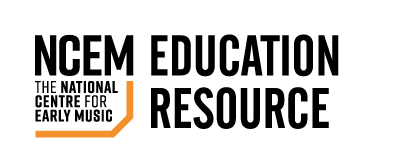
BAROQUE STRING PLAYING
Welcome to our Baroque String Playing resource pages. They have been compiled by the National Centre for Early Music, working alongside string players from the Orchestra of the Age of Enlightenment, and have been made possible by funding from Youth Music.
The resources have been written by Cathryn Dew (NCEM) and Cecelia Bruggemeyer (OAE), and feature Helen Kruger (violin), Nicholas Logie (viola), Ruth Alford ('cello) and Joe McHardy (harpsichord).
The pages have been designed for teachers and relatively advanced students of modern or baroque violin, viola and cello, who are interested in historically informed interpretations of music from the first half of the eighteenth century. We hope they will give you an insight into some of the techniques used by today's players of baroque music, and inform your own decisions about performing this exciting and challenging repertoire.
The resources focus on three pieces of eighteenth-century music.
Through these pieces we look at several different aspects of interpretation and technique, including:
Choosing a tempo
Understanding harmonic rhythm
Baroque gesture, phrasing and articulation
Bowing
Left-hand fingering
Ornamentation
Vibrato
Clicking on the links will take you to a detailed exploration of each piece. Each section includes information about the music and its interpretation, and video clips of OAE performers playing and talking about small sections of the pieces, together with a complete performance.
You may be interested in a particular piece because you play the instrument for which it is written, or because you are preparing that very piece for a music exam. We would recommend, however, that you explore all the pieces, as you will find features of each relevant to much baroque repertoire for stringed instruments.
Learning Resources
1.
What is historically informed performance practice?
An introduction to historically informed performance practice of baroque music, and a look at period instruments and bows.
2.
Allemande from JS Bach's Suite no. 1 in G for unaccompanied cello, BWV 1007
Ruth Alford explores this movement in the light of other baroque music for 'cello.
3.
Giga from J S Bach's Partita no. 2 in D minor for solo violin, BWV 1004
Helen Kruger looks at what what baroque theorists had to say about bowing, phrasing and articulation and applies it to this movement.
4.
Largo and Allegro from G P Telemann's Viola Concerto in G, TWV51:G9
Nicholas Logie discusses phrasing, ornamentation and vibrato.
5.
Further Reading

Education Resource
MUSICAL NEWS
